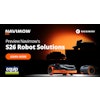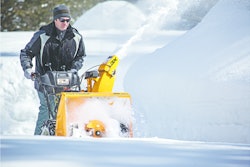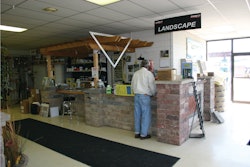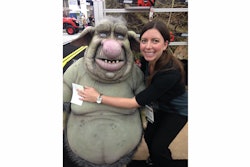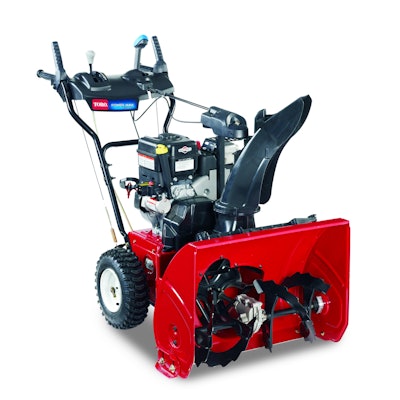
According to the Farmers’ Almanac, the winter of 2014–15 will see below-normal temperatures for about three-quarters of the nation. That means snow blowers could be getting a workout this winter. The Outdoor Power Equipment Institute (OPEI) offers the following safety tips to assist homeowners, contractors and business owners as they power up their snow removal equipment.
Make sure your snow blower is in good working order, before the first flakes fall. Change the oil. Install a new spark plug and inspect the belts to be sure they are in good working order. If you forgot to drain the fuel last winter before storing your snow blower, drain the tank now. Check the auger (always in the “off” position) and adjust any cables. Make sure it starts.
Review your owner’s manual. Read your owner’s manual and review safe handling procedures from your manufacturer.
Before it snows, clear the pathways you intend to use. Snow can sometimes hide objects that might clog the chute of a snow blower, or cause damage to the machine or people nearby. Remove doormats, sleds, boards, wires, and other debris from the pathways you intend to clear.
Use the right fuel. It's important to have the proper fuel on hand, as filling stations may be closed if there is a power outage after a snowstorm. Store fuel properly and buy the type of fuel recommended by your equipment's manufacturer. It is illegal to use any fuel with more than 10% ethanol content in outdoor power equipment (for more information on fueling properly see www.LookBeforeYouPump.com).
Handle fuel carefully. Use non-spill containers with spouts. Fill up the fuel tank outside before you start the engine and while the engine is cold. Never add fuel to a running or hot engine. Store fuel in a clean, dry, ventilated area, and never near a pilot light, stove, or heat source. Never smoke around fuel.
Dress properly for the job. Wear adequate winter garments and footwear that can handle slippery surfaces. Put on safety glasses, and avoid loose fitting clothing that could get caught in moving parts. Tie back long hair.
Operate your snow blower in visible conditions. Never operate the snow blower without good visibility or light.
Aim carefully and avoid people and cars. Never throw snow toward people or cars. Do not allow anyone to stand in front of your snow blower. Keep children or pets away from your snow blower when it is operating.
Use extreme caution on slopes and hills. Do not clear snow across the face of slopes. Be cautious when changing directions on slopes. Do not attempt to clear steep slopes.
Turn OFF your snow blower if you need to clear a clog or repair it. If you have to repair your machine, remove debris or unclog built up snow, always turn off your snow blower. Wait for all moving parts to come to a complete stop. Disconnect the spark plug wire or power cord.
KEY SAFETY TIP: Never put your hands inside the auger or chute. Use a clean out tool (or stick) to unclog wet snow or debris from your snow blower. Your hands should never go inside the auger or chute.
Know where your cord is. If you have an electric powered snow blower, be aware of where the power cord is at all times. Avoid tripping. Do not run over the power cord.
Fact Sheet: Safe Operation Practices for Snow Blowers
http://opei.org/content/uploads/2014/11/Snowthrower_safety-sheet_FINAL.pdf
About OPEI
The Outdoor Power Equipment Institute (OPEI) is an international trade association representing more than 100 power equipment, engine and utility vehicle manufacturers and suppliers. OPEI is the advocacy voice of the industry, and a recognized Standards Development Organization for the American National Standards Institute (ANSI) and active internationally through the International Standards Organization (ISO) and the International Electrotechnical Commission (IEC) in the development of safety and performance standards. OPEI is managing partner of GIE+EXPO, the industry’s annual international trade show, and the creative force behind the environmental education program, TurfMutt.com. OPEI-Canada represents members on a host of issues, including recycling, emissions and other regulatory developments across the Canadian provinces. For more information, visit www.OPEI.org


